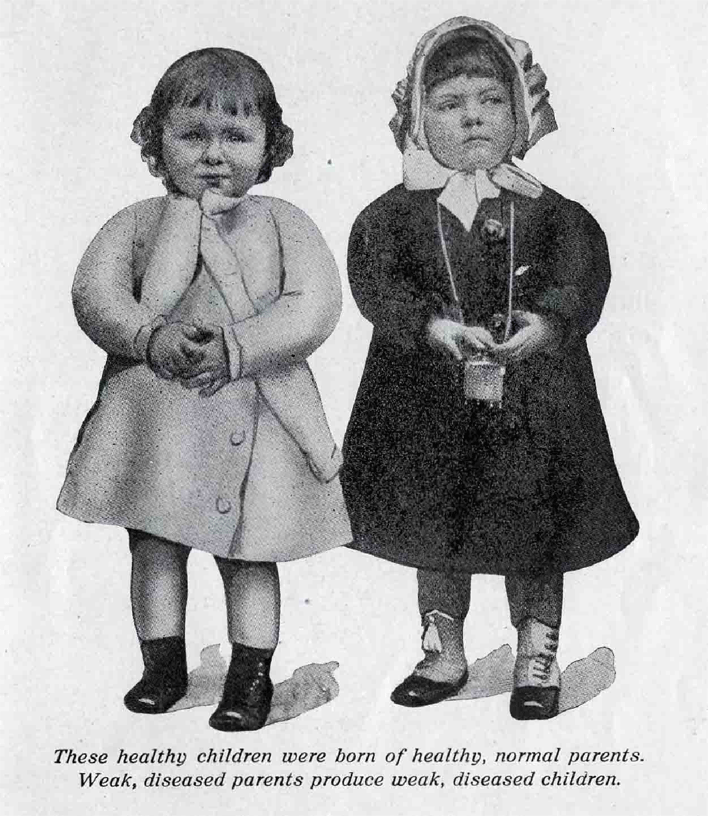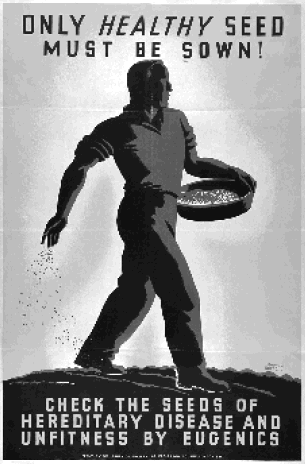
From Perfection to Destruction
by Kaitlyn Alford
1- Can you imagine a world where there are super humans? A world where sickness, frustations, or crimes did not existed in the world. And where people were created to be perfect. Sounds fascinating, right? That was what scientists in the late 19th and early 20th centuries believed was possible; that, if they could breed out bad qualities in humans and keep the good, science could create "super" humans, essentially the perfect beings. While this idea started with hopes of bettering the human race, history shows that not only is it difficult to determine what is a "perfect" human, but creating a superior human has unexpected and horrible outcomes.
2- The term eugenics was coined Francis Galton, Charles Darwin’s cousin, in the late 1800s. It is derived from the Greek word "eugenes" which translates to "good born". He devised a way to study wealthy men's families by pedigrees, careful tracking of a lineage of desirable traits with the hopes of predicting the qualities of their offspring. Based on his research using pedigrees, he concluded that biology was more involved in these men's successes, not their opportunities or wealth. He believed humanity could be improved through two processes – positive eugenics and negative eugenics.

Positive Eugenics
-
Encourages the "right" people to have children.
-
Focused on the wealthy class.
-
Men and women were encouraged to seek partners with desirable traits.
-
Examples of positive eugenics included contests were held in the early 20th centuries, like the "Better Babies" contest where commitees would survey groups of babies to seek out the most "perfect" child.
Negative Eugenics
-
Discourages the "wrong" people to have children.
-
Focused on the lower classes of society (mentally handicapped, criminals, or degenerates).
-
Were thought to "pollute" the human population.
-
Examples of negative eugenics included mass sterilizations, World War II concentration and death camps, and medical experimentation to prevent unwanted qualities to be bred into the human race.
 Children survivors of AuschwitzAuschwitz was a concentration camp in Poland during War World II. Over 1 million people died there. |  Advertisement for Eugenics"These healthy children were born of healthy, normal parents. Weak diseased parents produce weak, diseased children." |  Advertisement for Eugenics"Only HEALTHY seed must be sown! Check the seeds of hereditary disease and unfitness by eugenics." |
|---|---|---|
 Better Babies ContestsBetter Babies contestant, with trophy, Louisiana State Fair, Shreveport. |  United States Eugenics PosterPhiladelphia, 1926. |
3- Though eugenics was seen as a positive at the beginning of its creation, it created havoc through the countries that it was practiced in, especially for the countries that practice negaitve eugenics. The problem lies not with what kind of qualities that people wished to keep, but which kind of people should be discouraged to have families. While wealthy family were pushed to have more children, thousands to millions were sterilized (deprive (a person or animal) of the ability to produce offspring) or killed in the pursuit to create a perfect human. Horrible acts of atrocities were committed in the name of Eugenics: the Holocaust (the systematic genocide of six million Jews in Europe during World War II due to the fact they were seen as genetically flawed), sterilization of prison inmates and mentally handicapped in the USA throughout the 20th century, and isolation and humiliation of any person deemed "unfit" to reproduce.
4- Many inhumane acts have been committed through the brief history of Eugenics in the 20th century, all to try and find the way to better the human race. But the outcomes showed the death and torture of millions of people around the world. How can such a righteous goal turn out so horrible? When mankind places certain groups of humans above others, all that can happen is destruction of what makes the human race so beautiful; look around yourselves, everyone has special talents and abilities that cannot be summed up by their genes. The diversity of our race is so unique, how can we justify that any one kind of human is better than the rest? And would it be even rught for us to even begin to try?
Citations
-
"ELSI Eugenics Archive." ELSI Eugenics Archive. Web. 11 May 2015.
Photographs: "ELSI Eugenics Archive." ELSI Eugenics Archive. Web. 11 May 2015.
1) Read the passage above.
2) Using Word Cloud Generator, find the key words. In this google doc, write down the largest words that come up in the word cloud. These are the most used words in the text (Remember: repetition is important!)
3) Save your cloud as a PNG file in your ELA folder (found in the bottom right-hand corner of the site).
4) Answer all questions in your google drive form and be sure to submit it for credit for your station!
5) Once completed, email your word cloud to Mrs. Alford.


